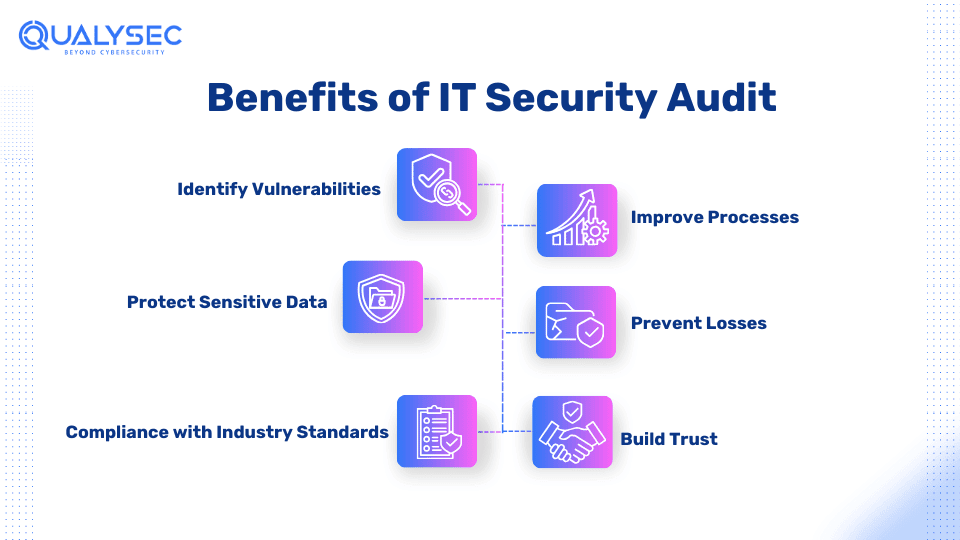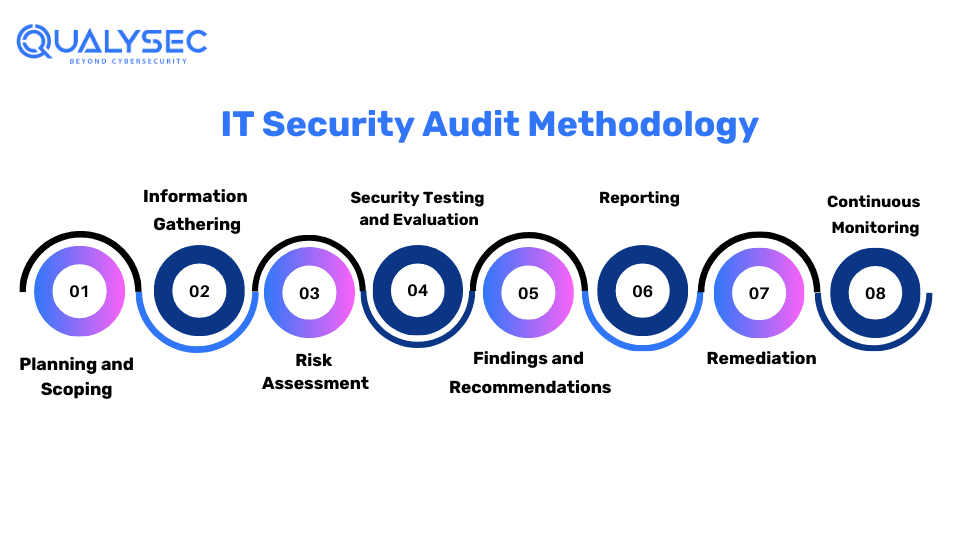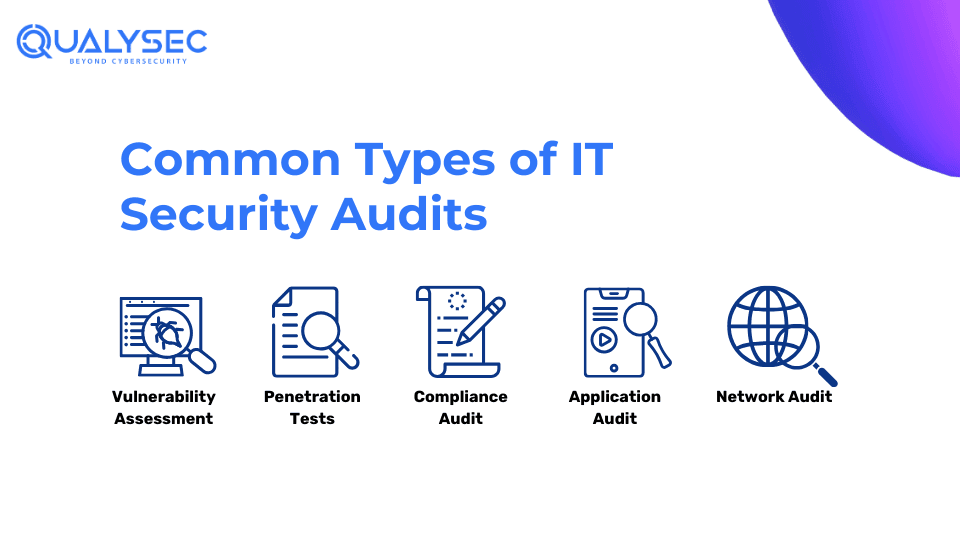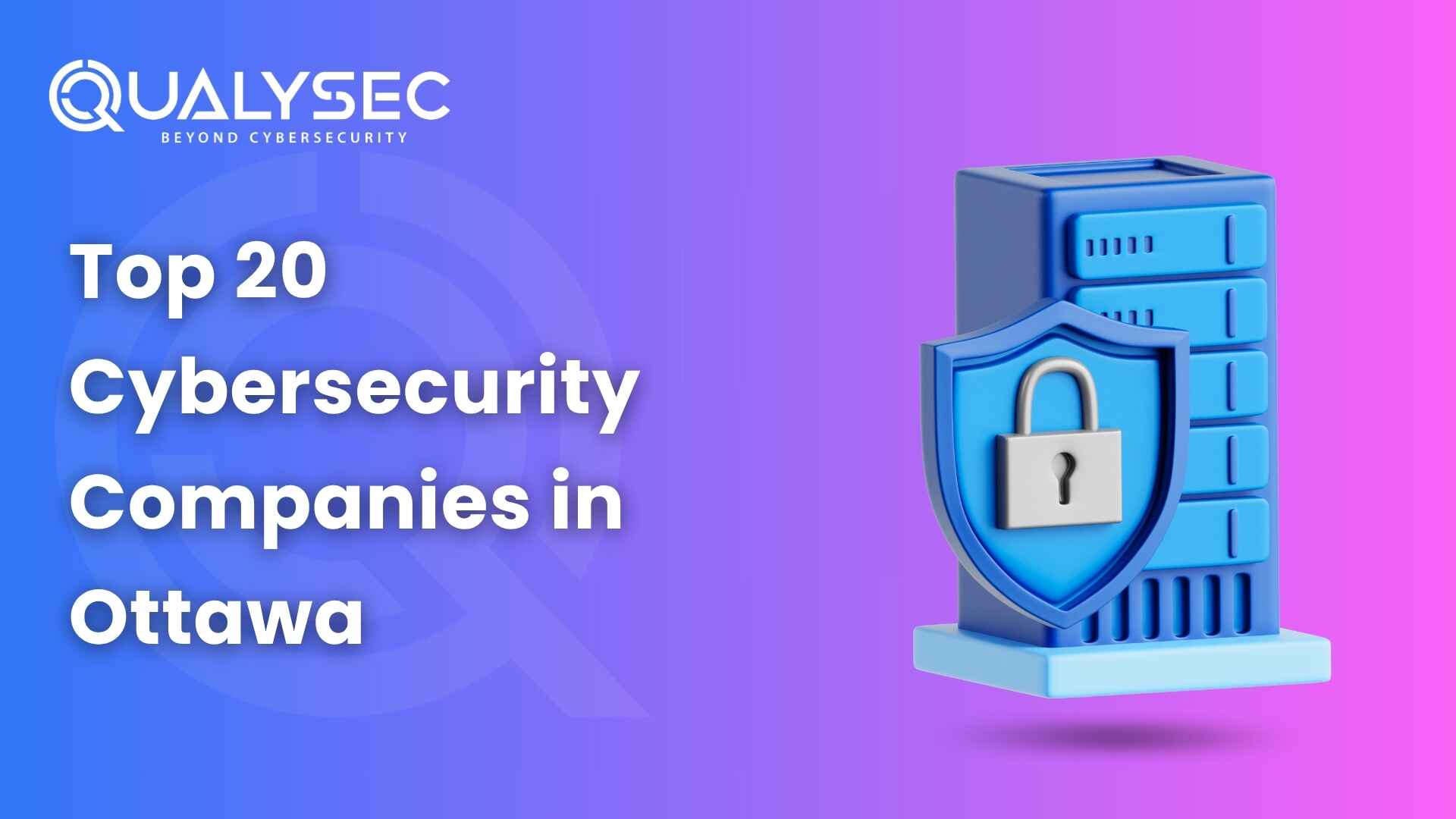Protecting the business from cyberattacks and maintaining effective cyber security is an issue of urgency for companies of all sizes. Hence, one key feature of this defensive strategy is conducting frequent IT security audits. These audits comprise an in-depth study of computer systems (including networks and policies) to search for possible weak points and make sure the company complies with industry standards. According to reported statistic of disclosed incidents shows 15,009,813 data were breached, highlighting the vital significance of strong cybersecurity defenses.
In the blog, we will look at the importance of IT security audits, including their techniques and various forms, as well as present a detailed checklist for enterprises to fortify their digital environments against potential vulnerabilities.
What is an IT Security Audit?
IT security audit refers to a comprehensive examination of the organizational computer systems, networks, and policies aimed at recognizing the vulnerabilities and rating the overall security posture. It is about assessing various areas like data protection, access controls, software configurations, and adherence to security policies and regulations. Moreover, the purpose of the audit is to reveal any vulnerabilities or gaps in security protections, that the hackers could take advantage of.
Through periodic audits, businesses can preventively detect security risks, reinforce defense mechanisms, and keep malicious actors from manipulating, stealing, or destroying their digital assets. As a result, it maintains the integrity, confidentiality, and availability of its digital assets.
Why IT Security Audit is Important
IT security audits play an important role in ensuring the security and stability of digital systems. Here are some key benefits:

1. Identifying Vulnerabilities
Audits pinpoint the problems in your systems, such as security loopholes and outdated software, before hackers do.
2. Protecting Sensitive Data
They make sure that the data that is sensitive like customer information or trade secrets can’t be accessed or leaked.
3. Compliance with Industry Standards
Audits provide a framework for security, ensuring your business adheres to appropriate legal and industry standards like GDPR, PCI DSS, SOC 2, etc., thereby, protecting you from legal fines and penalties.
4. Improving Processes
Through the audits, security measures can be checked and the auditors could thus suggest ways to optimize the procedures and improve the efficiency of the systems.
5. Preventing Losses
The timely detection and rectifying of security issues help protect your company from financial losses, data breaches, downtime, and reputation damage.
6. Building Trust
Demonstrating your concern for security shows customers, partners, and investors that their important information is safe with you.
IT Security Audit Methodology
Improving the organization’s security posture is the goal of a security audit, which is a crucial security procedure. The following is a detailed guide to IT security audit methodology for an organization:

1. Planning and Scoping
The initial stage of the security audit is to make a plan and scope the audit. This part is to find out the range of the audit.
2. Information Gathering
Then, the information gathering will commence. The audit personnel will collect the system information, policies, procedures, and relevant system information. Additionally, the team will be able to find out more about the organization and how it functions thus reducing the time it takes to determine the vulnerabilities.
3. Risk Assessment
The third phase of the security audit carried out is risk assessment. Once the required data has been gathered, the risk assessment is performed. It is done to determine the likelihood and impact of each risk to prioritize mitigation activities.
4. Security Testing and Evaluation
In this stage, the auditor will perform security tests and evaluations according to the comprehensive approach. In which both the automated tools and the manual testing are applied to measure the effectiveness of the vulnerabilities in the different applications, networks, and systems of the company. The test may comprise penetration tests, vulnerability assessments, and other security audit test procedures.
5. Reporting
The report is vital for the organization because it contains information about the security audit. Additionally, the report includes planning and scoping, vulnerabilities discovered, methods used, conclusions, and suggestions. It further assists the technical team in understanding the areas of security that are lacking, the potential consequences, and which practices or recommendations to enhance the organization’s security.
Ever seen a real penetration test report? Well, just click the link below and download one within seconds!
6. Remediation
If the development team requires assistance mitigating identified vulnerabilities, the service provider assists them online or over consultation calls.
7. Continuous Monitoring
Carry out periodical checks to ensure that all identified vulnerabilities have been tackled and security controls have been implemented accordingly. Include constant monitoring procedures that highlight and address the new threats that emerge.
Our experts at Qualysec have helped secure fintech, SaaS, and enterprise systems across 25+ countries. Manual + Automated Pentesting. No false positives. Actionable reports.

Types of IT Security Audits
Security audit plays an important role in strengthening the security of an organization’s digital assets. Given below are the various types of IT security audits and their roles:

1. Vulnerability Assessment
A vulnerability assessment uses automated tools to systematically scan for potential flaws or vulnerabilities, indicating areas that need to be addressed before they are exploited by unauthorized parties, thereby preventing potential harm.
2. Penetration Tests
Penetration tests replicate real-world cyber threats, imitating the methods and techniques used by real attackers. Ethical hackers, often known as penetration testers, methodically examine your networks and applications for weaknesses and exploit them, simulating real-world scenarios. Hence, this thorough evaluation provides crucial insights into the efficacy of your defenses in simulated assault scenarios.
Are you ready to secure your application against cyber threats? Contact our specialists for cutting-edge IT security audits. Defend your digital assets right away.
Talk to our Cybersecurity Expert to discuss your specific needs and how we can help your business.
3. Compliance Audit
This type of audit is a way to guarantee that your business is in line with specific rules, laws, or industry standards. Compliance security audits are an excellent way of confirming that you are adhering to the rules and protecting all sensitive data. common industry compliance includes GDPR, PCI DSS, SOC 2, HIPAA, ISO 27001, etc.
4. Application Audit
An application audit is a thorough review of the software applications (both web and mobile) used within your firm. This approach is vital for ensuring that the applications are used safely and protected from vulnerabilities.
5. Network Audit
This conducts a comprehensive analysis of every single entity in your network and locates any security gaps or defects. Therefore, regular network audits are vital for ensuring the security and stability of your digital infrastructure at all times.
Latest Penetration Testing Report

Conclusion
Organizations must conduct IT security audits to evaluate and improve their security posture. They can find weaknesses, reduce risks, guarantee compliance, and safeguard sensitive data by regularly conducting audits. Additionally, they may increase their overall security defenses and execute effective IT security audits by using industry standards, best practices, and a strategic methodology. Companies can proactively safeguard their digital assets and lessen any risks by taking the required corrective action in response to audit results.
FAQs
Q. What are common IT security audit standards?
A. IT security audit standards such as ISO 27001, NIST SP 800-53, PCI DSS, and SOC 2 are frequently used in the industry. Thus, the frameworks play a role of recommendation on how to measure and mitigate security vulnerabilities of the IT systems.
Q. What does an IT audit consist of?
A. An information technology (IT) audit usually involves the evaluation of internal controls, policies, and procedures. Additionally, it covers access controls, data integrity, and risk management issues.
Q. What is the scope of the IT security audit?
A. IT security audit checks the capability of safety measures in protecting digital possessions via networks, systems, applications, and data. Moreover, its goal is to identify flaws, evaluate risks, and propose solutions.
Q. Who performs an IT security audit?
A. Internal auditors, external auditors, or specialized IT audit companies perform IT security audits. These are the people who have acquired extensive knowledge in cyber security, risk management, and audit methods so they can effectively assess and improve security measures.
































































































































































































































































































































































































































































































































0 Comments